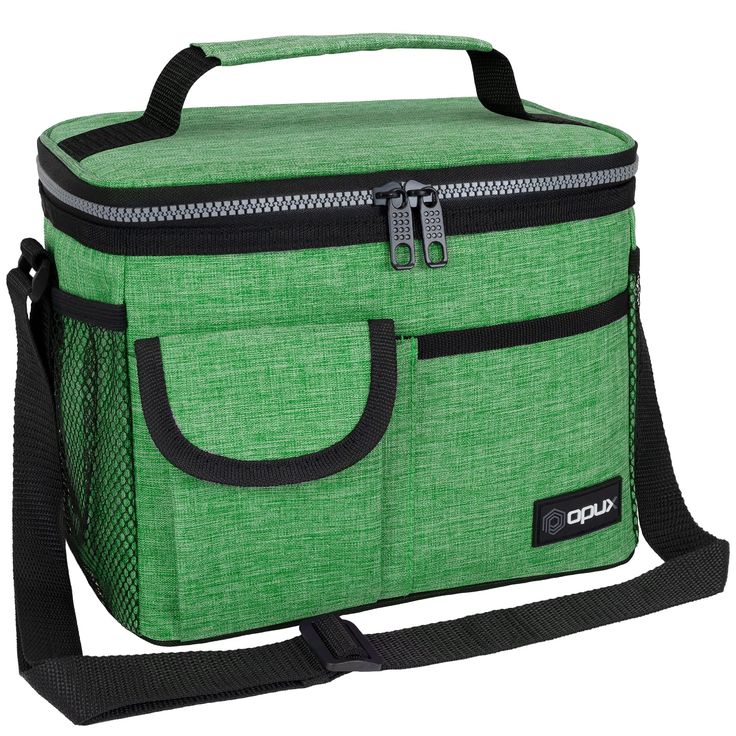In an era of increasing environmental consciousness, the choices we make, even for seemingly small items like lunch bags, can have a significant impact. Moving beyond single-use plastics and embracing sustainable alternatives for carrying our meals is a simple yet effective way to reduce our ecological footprint. Eco-friendly lunch bags offer a practical and stylish solution for everyday use, combining functionality with a commitment to planetary well-being. This article explores the importance of choosing sustainable lunch bags and highlights key materials and features to look for.
The Environmental Impact of Conventional Lunch Packaging
Traditional lunch packing often relies heavily on disposable materials, contributing to landfill waste and pollution:
- Single-Use Plastics: Plastic bags, cling film, and disposable containers are common culprits. These items often end up in landfills or, worse, in oceans, where they can take hundreds of years to decompose, harming wildlife and ecosystems.
- Non-Recyclable Materials: Many conventional lunch bags are made from synthetic materials that are not easily recyclable, further contributing to waste.
- Resource Depletion: The production of new, non-sustainable materials consumes valuable resources and energy, often leading to a larger carbon footprint.
By opting for reusable, eco-friendly lunch bags, we actively participate in reducing this waste cycle and promoting a more sustainable lifestyle.
What Makes a Lunch Bag Eco-Friendly?
An eco-friendly lunch bag is typically defined by the materials it’s made from, its durability, and its end-of-life considerations. Look for bags crafted from:
- Organic Cotton or Hemp: These natural fibres are grown without harmful pesticides and require less water than conventional cotton. They are durable, breathable, and biodegradable.
- Recycled PET (RPET): Made from recycled plastic bottles, RPET is a fantastic way to divert waste from landfills and oceans. It’s durable, often water-resistant, and can be recycled again.
- Bamboo or Cork: While less common for the main bag body, these materials might be used for handles or accents. They are highly renewable resources.
- Food-Grade, Non-Toxic Linings: Ensure the interior lining is free from harmful chemicals like PVC, BPA, and phthalates, which can leach into food. Materials like PEVA or EVA are often considered safer, but some brands offer innovative plant-based linings.
- Natural Insulation Materials: Some bags use natural wool, recycled denim, or other sustainable fibres for insulation, reducing reliance on synthetic foams.
Beyond materials, the manufacturing process also plays a role. Brands committed to ethical production, fair labour practices, and reduced energy consumption further enhance a product’s eco-credentials.
Essential Features for Sustainable Everyday Use
An eco-friendly lunch bag should not only be kind to the planet but also practical for daily life. Consider these features:
- Durability and Longevity: The most eco-friendly bag is one that lasts. Look for strong stitching, robust zippers, and high-quality construction that can withstand daily wear and tear, reducing the need for frequent replacements.
- Easy to Clean: A wipeable or machine-washable interior is crucial for hygiene and extending the bag’s life. Natural materials may require specific cleaning instructions.
- Insulation: Just like conventional bags, insulation is key for food safety and enjoyment. Ensure the eco-friendly option provides adequate thermal protection for your meals.
- Capacity and Organization: Choose a size that fits your daily meal needs, with compartments or pockets for containers, utensils, and snacks to keep everything organised and prevent crushing.
- Portability: Comfortable handles or adjustable straps make carrying your lunch convenient, whether you’re walking, cycling, or commuting by public transport.
- Versatility: A bag that can serve multiple purposes (e.g., a small grocery bag, a picnic bag) enhances its utility and reduces the need for other single-use items.
Making the Eco-Friendly Switch
Transitioning to an eco-friendly lunch bag is a small change with a big impact. It encourages mindful consumption, reduces waste, and supports brands committed to sustainable practices. Pair your eco-friendly bag with reusable food containers, water bottles, and cutlery to complete your zero-waste meal kit.
Conclusion
Choosing an eco-friendly lunch bag is a conscious step towards a more sustainable future. By prioritising materials like organic cotton, recycled PET, and non-toxic linings, and by selecting bags designed for durability and ease of use, you can enjoy fresh, healthy meals while contributing positively to the health of our planet. It’s a simple, stylish, and impactful way to make every lunch a green lunch.


















Leave a Reply